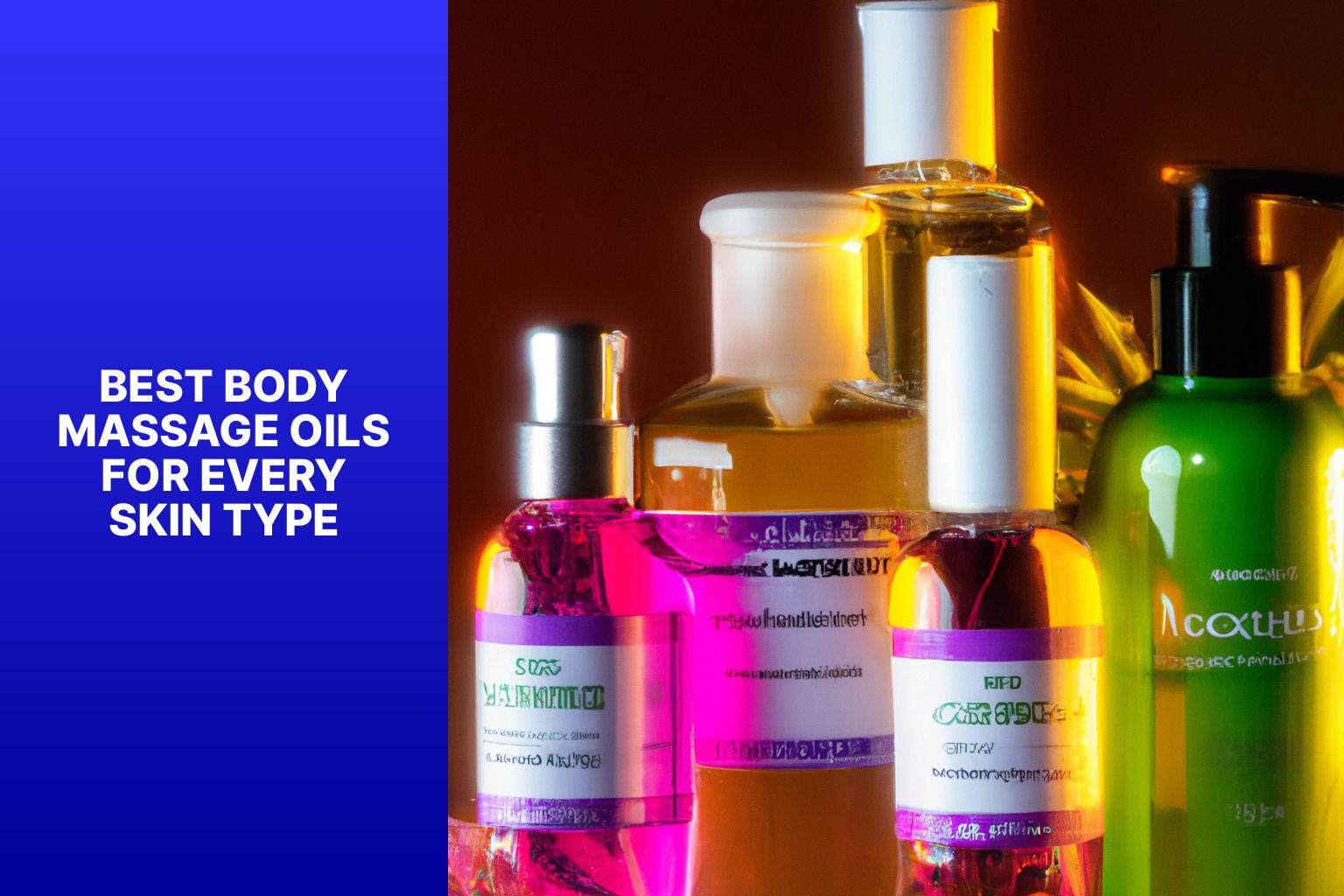When it comes to body massage oils, choosing the right oil for your skin type is key to maximizing the experience. The oil nourishes skin while allowing hands to glide smoothly during the massage. However, with so many options available, it can be overwhelming to select one.
Understanding Skin Types
Skin falls into five main categories:
- Normal – Balanced moisture and oil levels
- Dry – Lacks moisture, feels tight or flaky
- Oily – Overproduces sebum, leads to shine, acne
- Combination – T-zone oilier, cheeks more dry
- Sensitive – Easily becomes irritated or inflamed
Before choosing an oil, determine which skin type best describes yours. Consider any skin issues you want to target with your massage oil as well.
Those with normal skin require minimal maintenance beyond gentle cleansing and moisturizing to retain equilibrium.
Meanwhile, dry skin lacks adequate moisture and protective lipids. This leads to discomfort, flaking, reddening and sensitivity. Proper hydration becomes the focal point when selecting oils.
Oily skin overproduces sebum due to internal inflammation or hormonal shifts. The excess oil leads to enlarged pores, acne breakouts and a persistently shiny complexion. Regulating and balancing the overactive sebaceous glands grows important.
With combination skin, the T-zone forehead, nose and chin trends oilier thanks to a higher density of oil glands. Cheeks and other areas remain drier by comparison. The versatility of jojoba oil allows it to multitask for both needs.
Lastly, sensitive skin lacks resilience and easily becomes irritated by things that wouldn’t bother other skin types. Sensitive skin often reacts with redness, stinging or itching to topical products, requiring special care in oil selection.
Choosing the Right Ingredients
When selecting a massage oil, avoid irritants like synthetic fragrances, alcohols and mineral oil which could trigger reactions. Nourishing ingredients like plant oils and butters better nourish skin while allowing smooth massage glide.
Plant Oils – Sweet almond, olive, coconut, avocado, argan and jojoba oils. Deeply moisturize while delivering vitamins and fatty acids.
Plant Butters – Shea, cocoa and mango butters provide thick emollience. Softens and protects.
Essential Oils – Lavender, chamomile, tea tree and ylang ylang oils. Offer anti-inflammatory, anti-bacterial and aromatherapeutic benefits.
Always patch test oil on a small area of skin before full body massage. Monitor for redness, itching or irritation. Rare, but sensitivities to certain oils can develop over time.

Oils for Different Skin Types
Normal Skin
For normal skin, medium-weight moisturizing plant oils nicely hydrate without risk of greasiness. Sweet almond, olive, apricot kernel and grapeseed oils are great choices. Wheat germ and rosehip seed oils provide anti-aging antioxidants to combat free radicals. Skin also stays protected and supple with the inclusion of plant butters like shea or cocoa butter. Normal skin enjoys versatile oils as long as they are non-comedogenic and unlikely to clog pores.
Coconut oil offers multiple benefits for normal skin beyond its sweet tropical scent. Lauric acid gives antibacterial qualities to help prevent body acne while vitamins E and K nourish. Dry brushing skin before coconut oil massage boosts circulation and cell turnover. Add vanilla or lavender essential oil for an extra pampering touch.
Dry Skin
Intensely emollient oils with smaller molecules best combat dryness by penetrating deeply and restoring suppleness. Avocado, argan, olive and sweet almond oils all repair, soften and protect parched complexions with their high concentration of skin nourishing vitamins and essential fatty acids. Consider seeking out organic or cold pressed oils which retain more nutrients. German chamomile oil introduces anti-inflammatory benefits which calms the sensitivities that often accompany dryness. For significant itch relief, look for massage oil featuring colloidal oatmeal or aloe vera like Aveeno’s Daily Moisturizing Body Oil Mist. This formula provides immediate soothing upon contact.
Plant butters like shea, cocoa and mango pair nicely with dry skin massage oils to offer further emollient skin conditioning. The rich texture of butters protects vulnerable dry skin from losing more moisture while locking in the hydrating oils.
Oily Skin
Grapeseed, jojoba, rosehip and safflower oils suitably match oily skin’s needs thanks to their light, quick absorbing textures. Their linoleic acid content helps normalize sebum production. Avoid heavy creams or mineral oil that lead to further greasiness. Opt for gel formulas containing tea tree essential oil instead. Tea tree oil offers natural astringent, antibacterial and anti-inflammatory benefits ideal for keeping acne in check.
Some lighter options worth trying are:
- Burt’s Bees Refreshing Body Oil – Grapeseed & Peppermint
- Head & Shoulders Royal Oils Restoring Body Oil
- The Body Shop Tea Tree Squeaky-Clean Scrub
A handy tip is to use oil absorbing blotting sheets after oily skin massages to remove any excess grease and prevent clogged pores.
Combination Skin
Seek out massage oils specifically formulated for combination skin, but focus application only on dry areas, avoiding excess rubbing on already oily zones. Jojoba remains a prized oil for all skin types, but especially suits combination complexions. Its versatile composition allows it to effectively moisturize dry cheeks without aggravating oiliness on the T-zone. For a luxurious facial experience, incorporate tiny jojoba oil drops into a rich night cream then gently massage stress-relieving facial pressure points before bed. Those with combination skin may also benefit from use of a konjac sponge. This natural exfoliating sponge removes pore-clogging dead skin cells debris before applying oil onto cleansed skin. Actively oily areas need extra debris removal to allow better oil absorption.
Neroli essential oil also works wonderfully for combination skin by controlling excess oil in greasy areas while improving tone and elasticity in drier zones. The antioxidant properties and phytonutrient content of ginger essential oil help remedy dull, lackluster skin patches on combination skin as well. Lavender staple also makes an appearance in oils for combination skin types, promoting peaceful, calm rest.
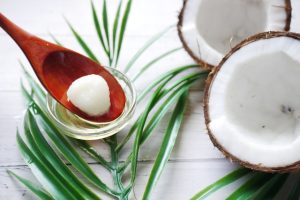
Sensitive Skin
Sensitive skin suffers from a compromised moisture barrier that leaves skin vulnerable to irritation, rashes and environmental damage. Hypoallergenic oils free from common irritants offer relief, but botanical oils may still cause issues for some. Coconut oil rated highly comedogenic, remains too heavy for some reactive skin types. However, fractionated coconut oil better tolerates sensitive issues since the long chain triglycerides get removed during processing. This leaves skin soft without greasiness. Apricot kernel oil similarly moisturizes while boosting collagen production for sensitive complexions thanks to its omega-6 fatty acids and vitamins A and E content.
Soothing German blue chamomile essential oil introduces bisabolol, chamazulene and a potent blend of antioxidants to reduce inflammation and neutralize reactivity triggers before they start. Its pleasant herbal aroma calms the nerves.
Calendula oil infused with skin-friendly marigold flower extracts assists sensitive skin massage oils with additional anti-inflammatory and antimicrobial capabilities. It guards against disruptions in the protective moisture barrier. Always patch test oils first. Monitor for any irritation with consistent use and discontinue use of any products that worsen rather than soothe sensitive skin.
Additional Skin Concerns
Those struggling with keratosis pilaris bumps or strawberry skin on body areas like arms, thighs, cheeks and buttocks find relief mixing their moisturizing body massage oil with a few scoops of sugar or coarse sea salt. The grains gently buff away dead skin during massage to reveal fresh, soft skin. Lopez notes that humid, hot shower steam followed by exfoliating body scrub sets the stage for keratosis pilaris friendly massage oils to better penetrate.
For stretch mark removal and prevention, platelet-rich plasma (PRP) oil notoriously stimulates new collagen formation thanks to growth factors and proteins from platelet cell extracts. Rub PRP oil over stomach skin during and post pregnancy to keep skin supple and bounce back faster.
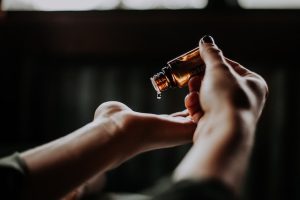
Tips for Using Oils Effectively
- Choose wisely – Select an oil compatible with your skin type needs. Consider added skin concerns like acne or hyperpigmentation
- Warm first – Place oil bottle in a bowl of warm water for a few minutes before use. This allows easier spreading while promoting muscle relaxation
- Set the mood – Dim lights, play soft music and ensure a comfortable room temperature for maximum tranquility
- Less is more – Only need a dime sized drop to cover a larger body area with a thin layer
- Take your time – Long, smooth motions without dragging promote circulation. Don’t rush!
- Be consistent – Schedule massages as regular self-care rituals for compounded benefits over time
- Avoid oil slick – Gently blot away excess oil with soft towel if skin feels too greasy post-massage
The Science Behind Massage Oils
On first thought, vegetable oils might not seem like a complex skincare topic. However, intricate science supports why massage oils nourish skin while enhancing massage benefits. Fatty acids, antioxidants, antimicrobial compounds and collagen promoting vitamins all play key roles.
Linoleic acid dominates grapeseed, rosehip and safflower oils composition. This fatty acid improves skin integrity to boost moisture retention in the lipid barrier. Sensitive skin low in linoleic acid gets more reactive and short-tempered as a result.
Oleic acid gets credit for much of olive oil’s smoothing, anti-inflammatory capabilities. It hydrates thirsty skin and calms everything from eczema to psoriasis.
Meanwhile, lauric acid in coconut oil boasts valuable antimicrobial traits important for preventing body acne. Caprylic acid gives similar antibacterial qualities.
Vitamin E shadows most plant oils with its stellar reputation for preventing UV damage, scavenging skin aging free radicals and improving tone. Vitamins A and C tag along to build collagen and even skintone.
Sesquiterpenes, powerful antimicrobial and anti-inflammatory agents, lead the lineup in essential oils derived from chamomile, sandalwood, ginger and cedarwood.
While individual components rightfully deserve acknowledgement, experts agree that oils overall synergy when combined, enhances therapeutic traits. Mix and match to find your personal ideal blend.
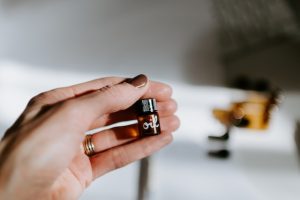
Best Practices for Oil Massages
Once you select the perfect oil for your skin type, proper technique and consistency remains key for transforming basic massage into a restorative ritual.
Set the Mood
Much like lighting candles before a relaxing bath, taking a moment to cultivate soothing sensory cues amplifies the tranquil effects of self-massage. Draw the blinds or curtains to dim the lights. Deep breathing slows racing thoughts while soft instrumental music played at low volumes envelops the background.
Turn phones on silent, lock the door and give yourself permission to mentally check out for a half hour. Light emitting electronics like phones, tablets and laptops overstimulate brains, preventing full relaxation.
Try Proper Breathing
Close your eyes while inhaling for a slow count of four, visualizing positive energy flooding into your body. Hold for four counts, then release for a slow 8 count exhale, mentally expelling stress toxins. Let your abdomen expand fully with inhales then deflate with exhale. Proper breathing triggers the parasympathetic relaxation response for enhanced tranquility.
Head First
Since the head, neck and shoulders tend to accumulate the most tension, begin massages focusing on these areas before moving to other body parts. Pour oil onto hands, then smooth over the scalp with your fingertips using small circular motions. Include gentle strokes over ears and along the jawline. targeted facial pressure points connect to organs like eyes and sinuses. Benefits flow inside and out.
Follow with Feet
Reflexology charts map out pressure points on feet that correlate to areas spanning internal organs to lymph nodes. While medical consensus doesn’t completely support reflexology, foot massages undoubtedly soothe and destress. manipulations to the central nervous system possibly reduce pain and stress hormones.
Progress Over Entire Body
After completing focused head and feet rubs, continue massaging the oil over any remaining body parts in need of attention in slow, methodical strokes. Common areas like lower back, shoulders and neck often appreciate massages to alleviate chronic tension or pain triggers. Don’t forget about hands and fingers which tire easily from extensive device use and repetitive motions.
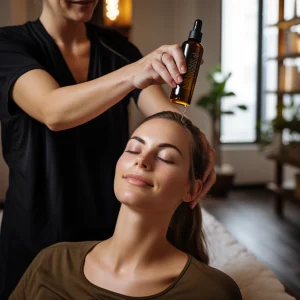
Safety and Precautions with Massage Oils
While most vegetable massage oils contain skin nourishing ingredients that prove safe for use, potential exists for sensitivity or allergic reactions. Certain medical conditions also warrant caution with use of massage oils. Consider the following tips:
Patch Test First
Dab a tiny bit of oil onto crook of elbow arm and monitor over next 24 hours before slathering all over the body. Redness, itching, stinging or sudden breakouts indicate an incompatible formula.
Avoid Eye Area Oils blur vision and irritate eyes. Use caution to avoid direct contact.
Ask About Allergies Inquire whether allergies exist to common oils like coconut, almond or wheat germ before gifting massage oils to others. Surprise rashes ruin relaxation.
Research Interactions Understand certain health conditions impact appropriate oil choices. Individuals on blood thinners should avoid evening primrose, borage, flaxseed, fish and dong quai oils since they demonstrate mild blood thinning effects that compound medicine actions.
Use Caution with Babies While baby massage offers bonding benefits, most authorities recommend avoiding oils for infants under 6 months old due to skin absorptivity concerns. Light, unscented organic lotions minimize risks for older babies.
Frequently Asked Questions
Does massage oil really make a difference?
Yes, utilizing appropriate massage oils makes a significant difference in multiple facets including ease of application, sensory experience, hydration and therapeutic effects based on ingredients and skin type matched selection.
Do I need a separate facial oil from body oil?
While utilizing two separate massage oil formulas guarantees you choose the most compatible match for both face and body, a single oil simplifies routines for those short on time. Determine if a multipurpose oil adequately nourishes both.
How long does massage oil last after opening?
Expect oils packed primarily with carrier oils like sweet almond, coconut, jojoba or argan to last 12-24 months after opening when stored properly. Essential oil blends shorten but still offer a 6-12 month lifespan. Refrigeration expands longevity. Discard any oils emitting rancid odors.
Can pregnant women use massage oils safely?
Most nourishing massage oils hydrate and soothe expecting skin thanks to gentle ingredients. However, pregnant women should avoid stimulating essential oils like rosemary, sage and peppermint which may trigger uterine contractions. Consult doctors before using any new products.
Which massage oils prevent stretch marks?
No oil definitively prevents stretch marks since collagen depletion and genetics strongly influence striae formation. However, massaging tissue plumping ingredients like peptides, vitamin E, olive oil and shea butter keep skin supple to better survive abdominal expansion through late pregnancy.
Glow with Good Health With the Help of Body Massage Oils
In summary, massage oils enhance skincare regimens by offering an additional delivery format for hydrating, nourishing ingredients. Tissue sliding friction gets minimized with less drag, making massage application smoother. The lipid molecules coat, condition and reinforce skin’s moisture barrier against transdermal water loss leading to improved hydration. Essential fatty acids repair visible damage. Herbal extracts introduce soothing, anti-aging antioxidants. However you utilize massage oils, skin undoubtedly glows with good health afterwards if the right oil fits your skin type needs.

